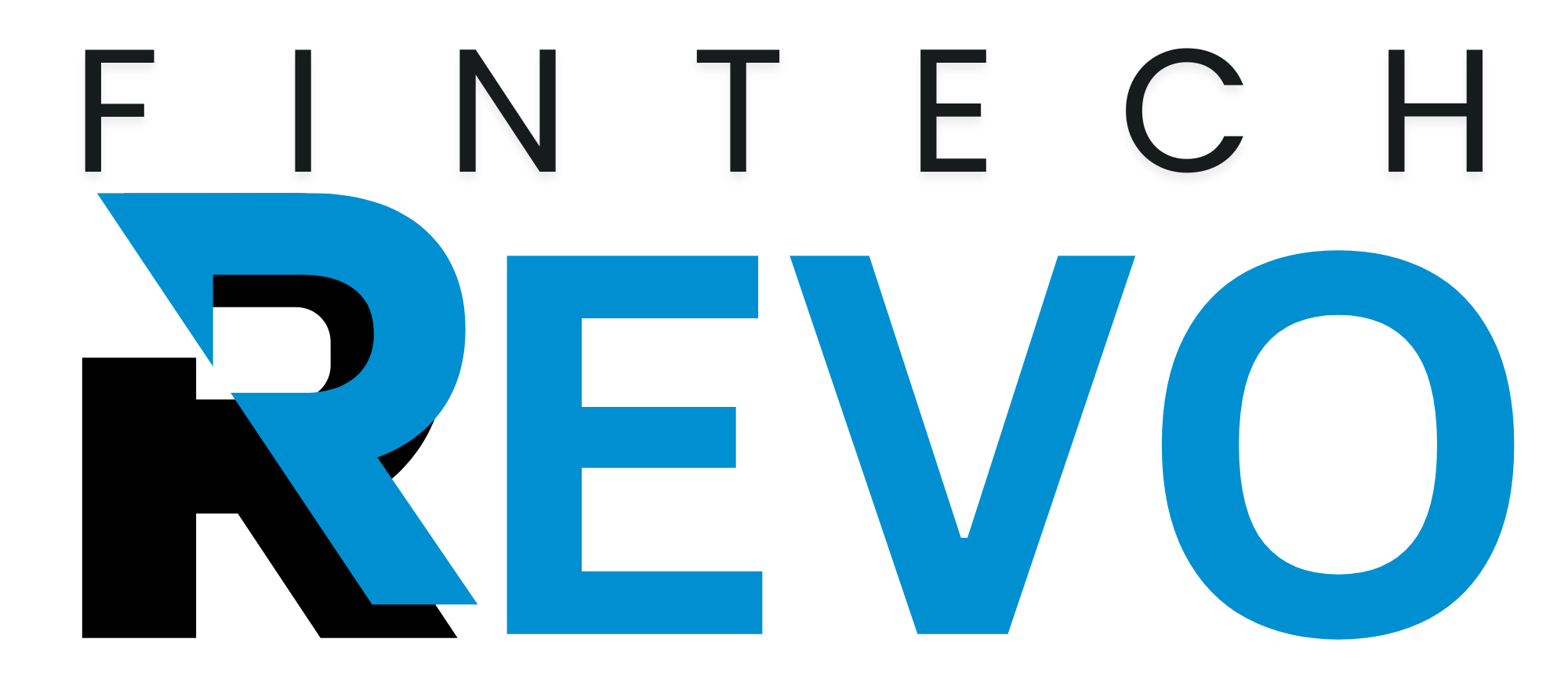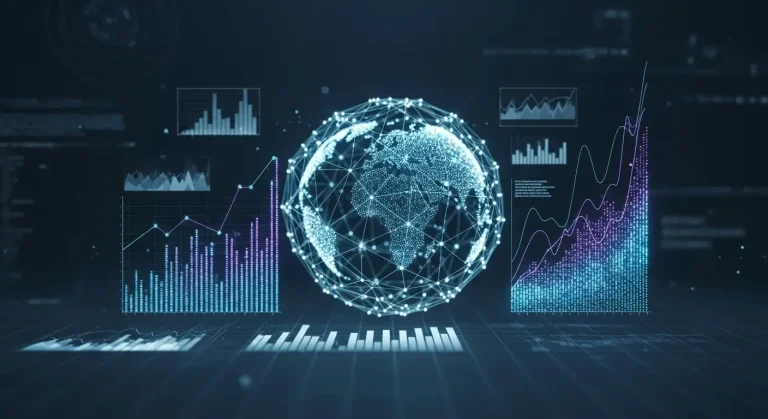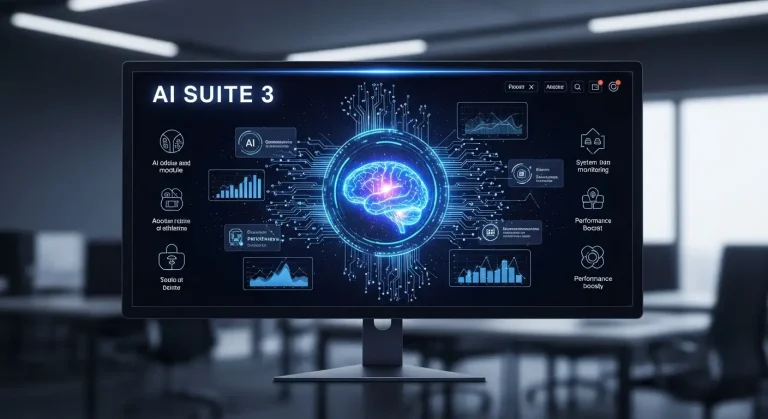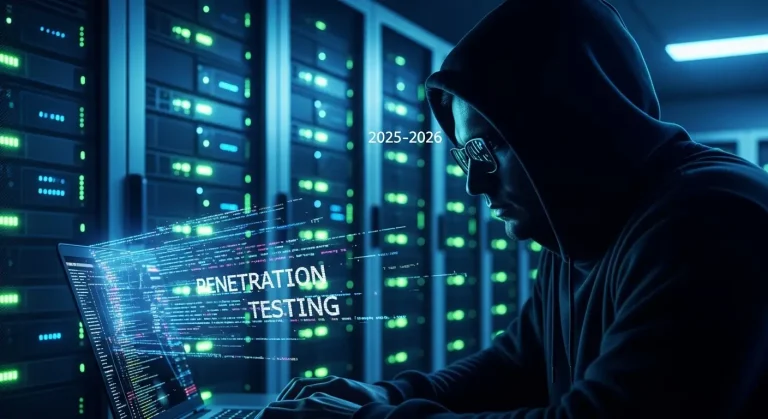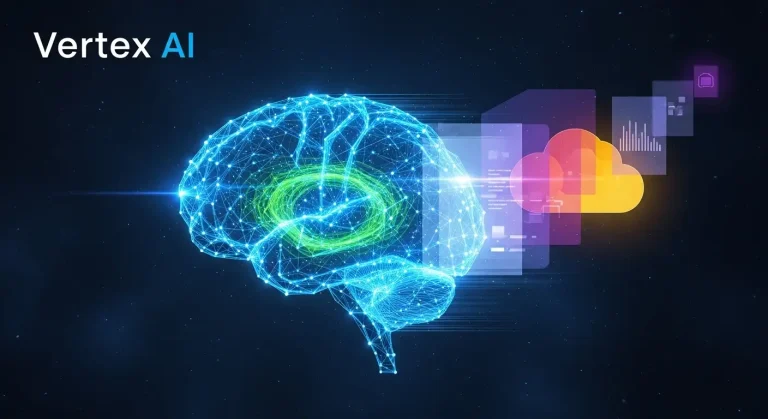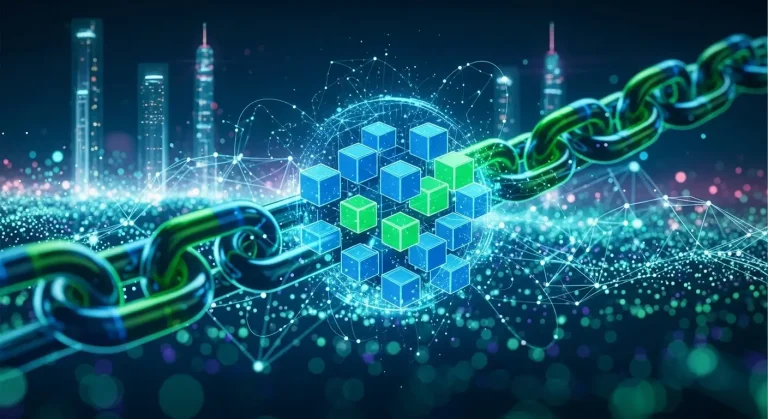Introduction to Wii ROMs and Game File Formats
When I first started learning about old console games, I was surprised by how many people were still talking about the Nintendo Wii. I had always thought once a console became outdated, people moved on. But then I realised something — Wii games had found a new life through digital backups known as ROMs.
A Wii ROM is basically a digital copy of a Wii game that can be stored on a computer. These ROMs let players use emulators like Dolphin or Cemu to play their favourite Wii titles without needing the physical disc. When I first tried this myself, I remember loading my old Super Mario Galaxy disc into a drive to back it up, and seeing it run on my laptop felt like bringing an old memory back to life.
These ROMs come in different formats such as ISO, WBFS, RVZ, and NKit. Each one serves a specific purpose. An ISO image is a full copy of the game disc, exactly as it is. WBFS files are compressed, taking up less space but still keeping the game playable. RVZ is a newer format used mostly by the Dolphin Emulator, designed to save even more space without losing quality. Finally, NKit ISO files are meant for people who want clean, verified dumps that match the original disc data perfectly.
When I first read about ROMs, the topic of legality came up immediately. Downloading Wii ROMs from random sites online can be risky and often illegal. However, if you own the original disc and make a personal backup, that’s generally considered acceptable in many regions. It’s a fine line, but most people who love preservation follow that route.
The Nintendo Wii community has kept game preservation alive through emulators and verified ROM dumps. Projects like Dolphin and Cemu are not just tools for gaming; they’re a part of keeping digital history alive. As someone who’s spent hours testing different Wii formats, I’ve learned that these files are more than data—they’re a way to keep the games we grew up with playable for the next generation.
Understanding the Different Wii ROM Formats
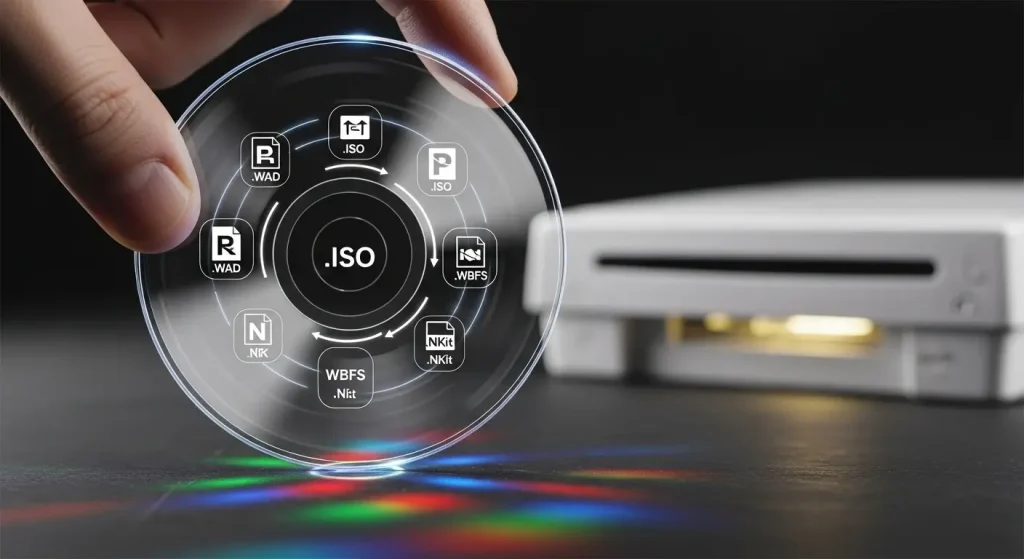
When I began collecting Wii games digitally, I didn’t realise how many file formats existed. At first, I thought all ROMs were the same, but once I tried loading different ones into Dolphin, it quickly became clear that they worked very differently.
ISO Wii ROMs are the original, untouched disc images. These are large in size but completely identical to the actual game discs. They’re perfect if you want the pure, original experience or if you’re testing compatibility in an emulator. I used to keep a few of these just for personal backups, but they take a lot of storage space.
Then I discovered WBFS Wii ROMs, and it felt like a relief. WBFS files are smaller because they remove unnecessary data, making them ideal for people who load games directly from a USB drive. When I used these with my modded Wii, it was smoother and faster to load games, especially large ones like The Legend of Zelda: Skyward Sword.
Later on, I found out about RVZ Wii ROMs. This format was introduced by the Dolphin team and became my favourite. RVZ compresses data smartly without losing any quality. The first time I converted an ISO into RVZ, the size dropped by nearly half, yet the graphics looked the same. It’s now considered the best option for emulation on modern systems.
Finally, there’s NKit Wii ROMs, which are designed for preservation. These files can be restored back to a full ISO if needed. They’re smaller, verified, and trusted by collectors who want to make sure their ROMs match the exact data from the original Wii disc. I once joined a preservation group that used NKit files to rebuild a complete Wii game archive for testing in emulators.
Each file type — ISO, WBFS, RVZ, and NKit — serves a unique purpose depending on your needs. ISO is for accuracy, WBFS for convenience, RVZ for efficiency, and NKit for preservation. Knowing which one to use saves time and storage space while keeping your games running smoothly across emulators.
| Format Type | Description | Average File Size | Best For | Compatible With |
| ISO | Full, uncompressed copy of the original game disc. | 4–8 GB | Purists and archival storage | Dolphin, Wii Homebrew, Cemu (converted) |
| WBFS | Compressed format removing unused data to save space. | 2–4 GB | USB Loader and modded Wii consoles | Wii Homebrew, USB Loader GX |
| RVZ | New compressed format with no quality loss. | 1–3 GB | PC emulation with storage efficiency | Dolphin Emulator |
| NKit | Archival format with verifiable, restorable data. | 2–3 GB | Preservation and verification | Dolphin, archival tools |
Legal and Safe Sources to Obtain Wii and Wii U ROMs
When I first got interested in Wii emulation, the biggest question I had was simple: where do people actually get these ROMs safely and legally? I didn’t want to risk my computer or break any laws just to play games I already owned. After a lot of reading, testing, and a few bad experiences, I figured out which sources are safe and what’s allowed.
The law is pretty clear about one thing — downloading games you don’t own is illegal in most countries, including the UK. However, if you already own a physical Nintendo Wii or Wii U disc, you can legally make a personal backup for your own use. This process is called “dumping.” It’s basically copying your disc onto your computer without sharing it online. That’s how most people create legal Wii ROMs or Wii U ROMs for emulation.
To dump your own game, you’ll need a modded Wii or Wii U with Homebrew tools installed. I used a tool called “CleanRip” on my Wii to back up my discs. It saved the game as an ISO file, which I then played on Dolphin. It took time, but I knew it was safe and fully legal since I owned the disc.
There are also trusted preservation archives that focus on keeping gaming history alive. These are not places to download copyrighted games, but they often list checksum data and tools for verifying your own dumps. Communities on platforms like Wii ROMs Reddit and ROMs Archive share knowledge, not links, about how to legally manage your games. Some fan-run projects, like The Vault Wii ROMs, catalogue titles for preservation and research rather than piracy.
I once tried a torrent site out of curiosity, but it was a bad idea. The files were fake, filled with malware, and I ended up cleaning my PC for days. That was the last time I downloaded anything from an unverified source. Stick with legal backups or your own copies. It saves you a lot of trouble.
If you still want to play old Wii titles without emulators, there’s a safer way — the Wii Virtual Console. It lets you buy and download classic games directly from Nintendo’s official store. The same goes for Wii U Virtual Console, though availability varies depending on your region.
| Method | Legality | Description | Recommended Tools/Platforms |
| Personal Disc Dumping | Legal | Backing up your own purchased game discs. | Homebrew Channel, CleanRip, Wii U Dumper |
| Official Virtual Console | Legal | Buying and downloading from Nintendo’s store. | Wii Shop Channel, Wii U eShop |
| ROM Archive Verification | Legal if not downloading copyrighted files | Checking checksum or metadata without downloading. | The Vault Wii ROMs, ROMs Archive |
| Torrent or Free ROM Sites | Illegal and unsafe | Downloading copyrighted games from the internet. | Avoid completely |
In short, the safest way is either to dump your own discs or buy digital versions legally. Anything that promises “free Wii ROMs” or “full ROM packs” is almost always illegal and risky. Keeping your collection legitimate protects both your system and your peace of mind.
Setting Up and Playing Wii ROMs on Different Platforms
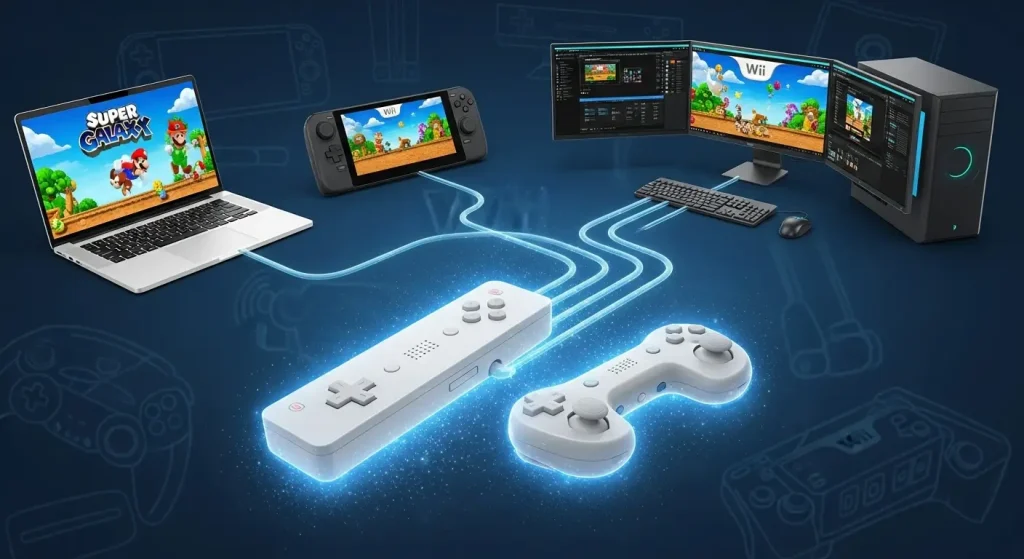
Once I had a few ROMs backed up, I wanted to play them across different devices. That’s where emulators come in. Whether it’s a PC, Android phone, or an actual Wii console, there’s a way to make these games run smoothly if you use the right tools.
For PC users, the Dolphin Emulator is the best option. It can handle both Wii ROMs and GameCube ROMs easily. I remember the first time I loaded Mario Kart Wii on Dolphin—it ran smoother than it ever did on my old console. You just drag the ROM file into Dolphin, tweak the settings, and start playing. It even supports HD resolutions and controller remapping.
For Wii U titles, the Cemu Emulator is what I used on my Windows laptop. It’s made specifically for Wii U ROMs, and it runs most titles perfectly if your PC is decent. When I tried it on my Steam Deck, the games looked fantastic after setting up the WUX and WUA files properly.
If you want to play ROMs on the original Wii hardware, it’s still possible. I installed the Homebrew Channel and used USB Loader GX, which reads games from an SD card or USB stick. This method is great if you already own the console and prefer playing on a TV with the original Wii Remote and Motion Plus Controller.
I also tested how GameCube ROMs worked on both the Wii and Wii U. Through Homebrew, the Wii can run GameCube titles easily, and Dolphin can do the same on PC. The Wii U can also handle both through compatibility layers and loaders.
Each setup works differently depending on your device, but once configured, it’s smooth sailing. For PC or Android, Dolphin is the easiest. For Wii U titles, Cemu handles them best. And if you’re sticking with the real Wii console, Homebrew and USB Loader GX give you the most authentic experience possible.
How to Convert, Decrypt, and Optimise Wii ROM Files
When I started building my Wii ROM library, I ran into a problem — storage space. ISO files can be huge, and I quickly filled my hard drive. That’s when I learned how to convert and optimise ROMs to save space and improve performance.
If you use a real Wii or USB Loader GX, converting ISO to WBFS is a smart move. It reduces the file size while keeping everything playable. I used WBFS Manager, a small program that turns your ISOs into WBFS files. Once I did that, I could fit twice as many games on the same USB stick.
For Dolphin users, RVZ compression is a better choice. Dolphin’s built-in tools let you convert ISO or WBFS files to RVZ, cutting their size by almost half without losing any quality. I converted my entire library, and the difference in storage was massive. The games still looked and played exactly the same.
Things get trickier with Wii U ROMs because they often come encrypted in formats like WUD, WUX, or WUA. To play them in Cemu, you need to decrypt them first using a Wii U ROM Decryptor. I followed a step-by-step guide from a Cemu community forum and used my own console keys to decrypt them safely. Once decrypted, they ran perfectly on my PC.
If you’ve bought digital Wii games on the Virtual Console, you can also extract those ROMs with the right tools. I once extracted a few of my old purchases to keep them backed up on a hard drive. It was reassuring to know I could keep those titles forever even if the store shut down.
Understanding file sizes and formats matters a lot. Converting and compressing saves space, decrypting makes ROMs playable, and proper organisation helps you manage your collection. It took me a while to get everything sorted, but once I did, my setup became faster, lighter, and easier to maintain.
Learn how to register a company.
Installing and Loading ROMs on Wii and Wii U Hardware
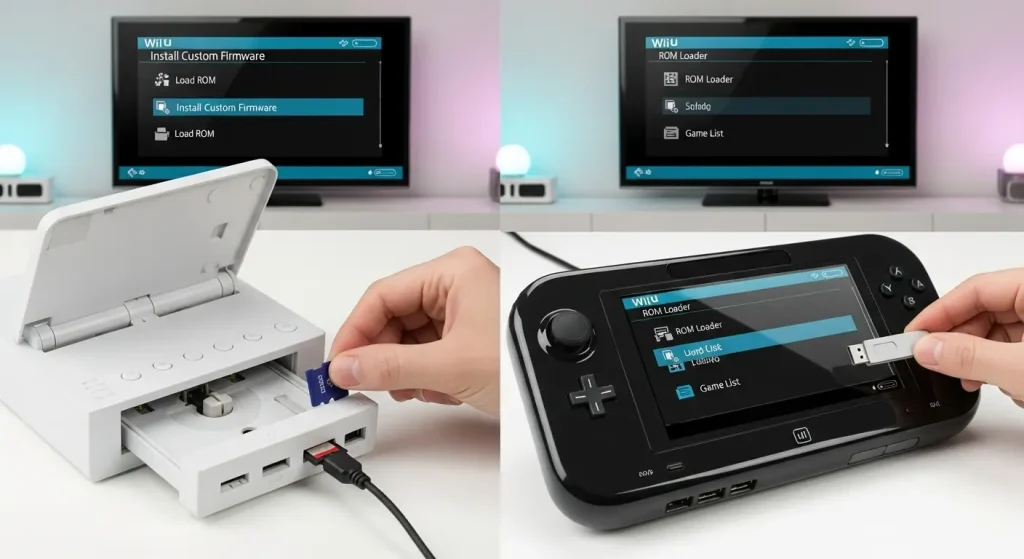
When I started loading ROMs on my old Wii, I had no idea how simple it would become after learning the basics. Once you understand how to handle SD cards, USB drives, and the Homebrew Channel, it feels like setting up your own private game library right on the console.
The first step is to copy your Wii ROMs onto either an SD card or a USB drive. I used a 64GB SD card at first, formatted in FAT32, which the Wii reads perfectly. It’s important to keep the folder structure clean — a “games” folder usually works best. I later upgraded to a USB stick for more space, and the Wii recognised it instantly after I plugged it into the right port.
Next comes the Homebrew Channel, which acts like a custom launcher. You’ll also need USB Loader GX, a small application that reads your ROMs directly from the SD or USB. Once I installed it, all my game titles appeared on-screen with cover art. It felt like unlocking the full potential of the Wii. You can select any game and play it immediately without swapping discs.
If you’re using a Wii U, the process is a little different. You can still play Wii titles using the built-in Wii Mode, but for better performance, I used RetroArch on the Wii U. RetroArch lets you load both Wii and GameCube games through various emulator “cores.” It took a few tries to get it right, but once I did, I could switch between games without restarting the console.
Installing Wii U ROMs on PC with Cemu is another option. You simply download the Cemu Installer, add your ROMs Pack, and then install any updates or DLC files. I liked that Cemu allowed me to fine-tune controls and even upscale graphics while keeping original performance intact.
One thing I learned early on — always back up your saved data. Corruption can happen if you remove the SD card or USB stick while the console is running. I lost a save once from Donkey Kong Country Returns and started backing up everything weekly after that. Keeping an extra copy of your saves in a folder on your PC will save you a lot of frustration later.
When you take your time setting everything up, the Wii and Wii U can become powerful gaming systems again. It’s satisfying to see them load ROMs smoothly, almost like they were built for it.
Using Dolphin and Cemu Emulators Effectively
After experimenting with real hardware, I wanted more control — better graphics, smoother frame rates, and save states. That’s when I began using Dolphin and Cemu, the two most powerful emulators for Wii and Wii U games. Both have their strengths, and with the right setup, they can make these old games look brand new.
Before you start, it’s good to check your system. Dolphin Emulator runs well even on mid-range PCs, but for stable 60 FPS and HD quality, I upgraded my graphics card and it made a noticeable difference. For Cemu, a strong CPU and GPU are essential, especially for Wii U games like Super Mario 3D World.
I keep all my Wii and GameCube ROMs organised using a simple folder structure managed by Dolphin ROM Manager. Each folder is labelled clearly, and Dolphin automatically loads every game in the library. I also linked Dolphin to my Google Drive, so I can access my ROMs from multiple devices. It’s convenient when I switch between my laptop and desktop without transferring files manually.
The graphics settings in Dolphin can completely change how your games look. I usually set the resolution to 1080p, enable anti-aliasing, and adjust anisotropic filtering. These tweaks make classics like Mario Kart Wii or Metroid Prime look crisp and clean without lag. It’s also important to choose the right backend — OpenGL works best for most PCs, but Vulkan can boost performance on newer GPUs.
With Cemu, managing Wii U ROMs is straightforward. Once installed, I add the ROM directories, and Cemu scans everything automatically. It supports WUX, WUA, and decrypted files, so compatibility is rarely an issue. On my Steam Deck, Cemu performed better than I expected once I adjusted the resolution scaling.
Controller setup is where these emulators shine. I connect my real Wii Remote using Bluetooth for an authentic feel, but Dolphin also supports Xbox and PlayStation controllers. Mapping motion and sensor inputs took a few tries, but once configured, it worked flawlessly. For games requiring motion control, I used Dolphin’s sensor emulation, which mimics the Wii Remote using a regular controller.
Speed also matters. To get fast downloads for new ROMs or updates, I rely on direct Google Drive or archive sources I maintain privately. Having your own verified collection avoids file mismatches and keeps gameplay stable.
In the end, both Dolphin and Cemu make Wii and Wii U gaming flexible. Dolphin is perfect for classic Wii and GameCube games, while Cemu takes care of Wii U titles with sharp visuals. Once I fine-tuned both, my old favourites looked better than they ever did on the original consoles.
Homebrew, Mods and Custom Wii ROM Enhancements
When I first learned about the Homebrew Channel, I didn’t realise how much it could unlock on the Wii. It’s not just about playing backups; it’s a whole new way to experience games. After I installed it, I started exploring mods, fan-made levels, and even graphical upgrades that made old games feel new again.
To hack a Wii, you need a few basic tools. The easiest method I tried was the LetterBomb exploit. It uses the Wii’s message board to install the Homebrew Channel safely. Once done, the system can load apps from an SD card. This lets you run modded Wii ROMs, use backup loaders, or even install custom software that Nintendo never offered officially.
Once the setup was ready, I moved on to ROM hacks and fan projects. Some creators add new levels to games like New Super Mario Bros. Wii, while others translate Japanese exclusives into English. I tested one Japanese Wii ROM that had never been released in my region, and it played perfectly thanks to region-free ROM support.
Modded Wii ROMs also come with HD textures, improved soundtracks, or gameplay tweaks. I once installed a Wii ROM Español translation patch just to see how localisation worked — and it made me appreciate how passionate the modding community really is. Many players also use Gecko OS, a tool that runs custom codes to change how a game behaves. It can unlock features, fix bugs, or bypass region locks completely.
But modding isn’t without risks. If you install the wrong WAD file or modify system settings, you can brick your console. That’s why I always keep a Wii firmware backup saved on my SD card. It allows me to restore the system if something goes wrong. It’s also smart to read community guides before trying any major changes.
Over time, I realised that Homebrew isn’t about piracy — it’s about freedom. You can play fan translations, run import titles, and keep your old Wii useful long after official support ended. Just approach it carefully, and you’ll open a world of customisation and creativity.
Compatibility Between Wii, Wii U and GameCube ROMs
One of the things I found most interesting about Nintendo consoles is how well they connect across generations. When I tested my collection of GameCube and Wii ROMs, I was amazed that both could work smoothly on newer hardware and emulators with only a few adjustments.
The Wii itself can play GameCube ROMs without much effort, as it shares the same hardware architecture. I still have my old GameCube controller plugged into the Wii for games like Luigi’s Mansion. When I switched to emulation, Dolphin handled both GameCube and Wii titles using the same setup, making it convenient to manage everything in one place.
With the Wii U, things got even more interesting. The console supports legacy Wii ROMs and accessories like the Wii Remote. I tested several titles in Wii Mode, and they worked flawlessly. The Wii U also supports newer controllers, giving players more comfort while playing classic games.
I once compared Wii ROMs to Wii Switch ROMs out of curiosity. The file formats differ because of how each system handles data compression and encryption. The Switch uses a completely different architecture, so you can’t mix them, but understanding this difference helped me keep my files organised when archiving games.
For players who want one platform to handle it all, RetroArch Wii U is a great choice. It’s a multi-system emulator that lets you run GameCube, Wii, and even some Wii U ROMs through its modular “cores.” I remember running Metroid Prime on it and being impressed by how stable it was.
This level of backward compatibility and cross-play between consoles is what keeps the Wii community alive. Whether you’re using an original Wii, a Wii U, or an emulator like Dolphin, your ROMs can still find a home. It’s one of the reasons why these systems remain loved even years after release.
Troubleshooting and Common Issues with Wii ROMs
When I started managing my ROM library, things didn’t always run smoothly. I faced errors, black screens, and even missing files. It was frustrating at first, but with some patience and help from online communities, I learned how to fix most of these problems quickly.
| Problem | Possible Cause | Fix / Solution |
| Decryption error in Cemu | Missing or incorrect key files | Add console keys in Cemu’s key.txt and re-decrypt ROM |
| Black screen / crash | Corrupted ROM or wrong video backend | Re-download verified ROM or switch from Vulkan to OpenGL |
| Controller not working | Bluetooth pairing or mapping issue | Reconnect Wii Remote or remap in emulator settings |
| Slow performance / lag | Large ISO or slow storage device | Convert to RVZ or store ROMs on SSD/fast SD card |
| Missing save data | Removing SD/USB while running | Always close game before unplugging storage |
The most common issue I faced was decryption errors when dealing with Wii U ROMs. Sometimes, when I tried to load a WUD or WUA file in Cemu, it refused to open because it needed specific decryption keys. The fix was simple once I understood it — I had to use the correct key files for the ROM. There are guides on community sites that explain how to decrypt Wii U ROMs safely using your own console keys. Once decrypted, the games launched perfectly every time.
Black screens and crashes are another headache, especially when a ROM is incomplete or corrupted. I once downloaded a game that froze after the title screen, only to find out it was missing a small file segment. Re-downloading or verifying the ROM’s hash usually solves that. Also, adjusting settings in Dolphin or Cemu can prevent performance issues. If your screen goes black during gameplay, lowering resolution or switching the video backend from Vulkan to OpenGL often helps.
Controller input problems are easy to overlook but common. I’ve had times when Dolphin wouldn’t recognise my Wii Remote until I re-paired it through Bluetooth. If you’re using Android, connecting a controller via USB OTG usually fixes input lag. Both Wii ROMs PC and Wii ROMs Android can behave differently depending on your hardware, so small tweaks make a big difference.
Performance and storage issues often come down to format handling. Large WBFS or RVZ files sometimes cause lag if stored on slow drives. I noticed that once I converted some of my WBFS files and reorganised them, loading times improved significantly. For Android and portable systems like the Steam Deck, keeping ROMs on an SD card with fast read speeds helps avoid stuttering.
Whenever I run into a strange issue, my first stop is ROMs Reddit or emulator support forums. The Dolphin Support and Cemu Logs sections are gold mines for solutions. Reading how others solved similar problems saves time. The emulation community is active, and someone has usually faced your problem before.
Troubleshooting ROMs can feel tricky at first, but once you know where to look and which tools to use, it becomes routine. You’ll spend less time fixing errors and more time actually playing your games.
Popular Nintendo Wii ROMs and Fan Favourites
Over the years, I’ve noticed that some Wii games never seem to lose their charm. Even now, they’re among the most searched and downloaded ROMs online. I’ve played most of them myself, and they truly represent the best of what the Wii had to offer.
One of the most loved titles is Mario Kart Wii. The Mario Kart Wii ROMs collection includes custom tracks, fan updates, and online patches. I still remember trying out a community-made course based on Rainbow Road, and it was both fun and challenging. These ROMs are great for anyone who loves racing games or wants to relive multiplayer chaos with friends.
Super Smash Bros Wii ROMs are another favourite. Fans have modified them to include extra characters, updated visuals, and faster gameplay. When I tested one of the community patches, it felt like playing a remastered version. These projects show how much effort the modding scene puts into keeping games fresh.
Games like Just Dance Wii, Lego Wii, Kirby, and Pokémon Wii ROMs are also widely enjoyed. I’ve tried a few Lego titles with my younger cousins, and they still find them just as entertaining today. Kirby Wii ROMs bring back that bright, cheerful style that defined the console, while Pokémon versions keep collectors busy with rare regional releases.
There are also games like New Super Mario Bros Wii ROMs and Sonic Wii ROMs that show up often in archives. These titles have special patches, alternate soundtracks, and improved resolution options for emulators like Dolphin. I once played a fan-enhanced version of Sonic Colors, and it ran beautifully in HD.
What makes these ROMs popular isn’t just nostalgia — it’s accessibility. They’re easy to find, lightweight to run, and offer versions for every type of setup, whether you’re using Dolphin, a Wii U, or a modded console. File sizes vary depending on whether you’re using ISO, WBFS, or RVZ, but most can fit comfortably on a standard SD card.
These fan favourites continue to attract players because they blend familiarity with fresh content. Even after all these years, the Wii’s library still holds up, proving that great gameplay never goes out of style.
Wii ROM Preservation and Community Projects
The longer I’ve been part of the emulation world, the more I’ve come to appreciate how much effort goes into preserving Wii games. Many of these titles would be lost without the hard work of community archivists and developers.
Projects like The Vault Wii ROMs collect verified game dumps, metadata, and documentation to protect Nintendo’s history. I once used The Vault to confirm that one of my NKit ISO backups matched the original retail release, and the accuracy was spot-on. It’s not about sharing files — it’s about keeping digital records clean, traceable, and organised.
The formats NKit and RVZ are crucial in this process. NKit helps preserve data exactly as it appeared on discs, making it easy to rebuild or verify later. RVZ, on the other hand, compresses those large ISO files without losing any data. This combination keeps archives efficient while maintaining authenticity. I’ve personally used both to build a small library of verified Nintendo Wii Game ROMs, and they work perfectly in Dolphin.
Communities also play a big role in verification. I’ve seen countless discussions on Wii ROMs Archive and ROMs Reddit where users compare hash codes to make sure dumps are accurate. This kind of collaboration ensures that future gamers will have reliable copies of classic titles.
Proper ROM storage is another key part of preservation. Keeping backups in multiple locations — like an external hard drive and a cloud folder — prevents data loss. I once lost a full set of files after a hard drive crash, so now I always keep at least two copies. Maintaining filenames, dates, and game IDs also helps when sorting through large collections.
What’s most inspiring is how this preservation work connects players, developers, and fans. It’s a community effort that values history as much as gameplay. Thanks to these ongoing projects, the Wii’s legacy will stay alive long after its hardware fades away.
FAQs: Common User Queries About Wii and Wii U ROMs
Over time, I’ve seen the same questions pop up again and again about Wii and Wii U ROMs. When I first started, I had these exact questions myself. So, I’ve gathered the most common ones and answered them in a simple, clear way based on what I’ve learned from hands-on experience.
How do Wii ROMs work and what format is best?
A Wii ROM is a digital copy of a Wii game disc that you can play using an emulator or on a modded console. The best format depends on what you’re doing. ISO is the full, uncompressed version — ideal for purists or those who want exact data copies. WBFS is smaller, making it great for USB loaders on real consoles. RVZ is what I personally use most; it saves storage space while keeping the original quality. Dolphin Emulator runs RVZ files flawlessly, so for most players, it’s the best all-round choice.
Where can I get Wii ROMs safely?
The safest option is to make your own backups. Use the Homebrew Channel and tools like CleanRip to copy your physical game discs. Downloading random files online is risky and often illegal. If you’re looking for verified data or preservation projects, communities like ROMs Reddit or the Wii ROMs Archive provide guidance (but not illegal downloads). I once downloaded from an unverified site out of curiosity and got malware, so I stick to legal backups now.
Can I play Wii U ROMs on Wii or vice versa?
No, you can’t. The Wii and Wii U use different architectures. While the Wii U can play Wii titles through backward compatibility, the Wii can’t run Wii U ROMs. If you want to play Wii U games, you’ll need Cemu Emulator on PC or a Wii U console itself. When I first tried loading a Wii U file on Dolphin, it wouldn’t even open — that’s when I learned the systems handle data differently.
How big are Wii ROMs and how do I store them?
Most Wii ROMs range between 1 GB and 4 GB, depending on the format. The full ISO files are largest, while WBFS and RVZ are much smaller. I keep mine organised on an external hard drive with folders by console and region. If you use emulators like Dolphin, linking the folder in settings lets it display your entire library automatically.
How can I decrypt and load ROMs on Wii Homebrew or Dolphin?
For Dolphin, there’s no need to decrypt standard Wii ROMs; you just load them directly. Wii U ROMs, however, often come encrypted and must be decrypted using console keys with tools like Cemu’s setup guide. On a modded Wii, loading ROMs is done through Homebrew Channel apps such as USB Loader GX. Once set up, you simply pick your game and start playing.
Learning how to handle ROMs takes time at first, but once you know which tools and formats to use, it becomes second nature. You’ll be able to manage, play, and back up your games safely and confidently.
Source: FinTech Revo .com
Final Thoughts: Choosing the Right Wii ROM Format (NKit vs ISO vs RVZ)
When I first began organising my Wii collection, I was overwhelmed by the number of file formats out there. Over time, after trying every type, I found that each has its place depending on what you want — preservation, performance, or simple playability.
If you’re mainly using emulators, RVZ is the most efficient format. It’s compressed enough to save space but still keeps every detail from the original ISO. The Dolphin Emulator runs RVZ files perfectly, and loading times are faster compared to larger files. I switched my entire collection to RVZ, and the difference was clear — smaller files, smoother gameplay, no issues.
For archival purposes, NKit ISO is the better choice. It preserves the original disc data while reducing file size. Archivists prefer NKit because it can be restored to the original ISO whenever needed. I’ve used NKit for older or rare games that I want to keep safe for long-term storage. It’s an ideal balance between authenticity and efficiency.
ISO ROMs are perfect if you want exact copies, untouched and original. They’re best for purists, collectors, or anyone testing for compatibility. The only drawback is their size — they take a lot of space, but that’s the price for having a true 1:1 disc image.
WBFS ROMs, meanwhile, are best for modded consoles. They run perfectly on loaders like USB Loader GX, and I still keep a few WBFS copies just for my old Wii setup.
When it comes to legality, always stick with self-dumping — copying your own discs is the safest and most ethical way. I’ve backed up my personal Wii library over the years, and knowing it’s fully legal brings peace of mind. Downloading files you don’t own crosses into unsafe territory, and it’s not worth the risk.
Balancing compression, compatibility, and legality is what matters most. RVZ is best for play, NKit for preservation, ISO for authenticity, and WBFS for convenience. Every format serves a purpose, and once you know when to use each, managing your collection becomes effortless.
In the end, it’s about preserving what you love. The Wii may be an older console, but with emulators like Dolphin and storage-friendly formats like RVZ and NKit, it continues to live on. As long as players keep backing up and archiving their games responsibly, the magic of Nintendo’s Wii will never fade.
